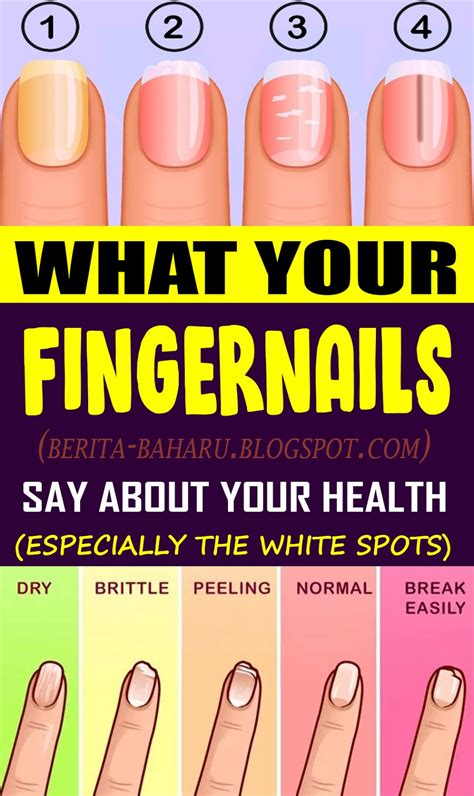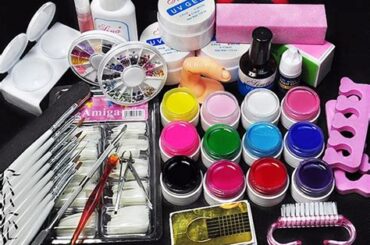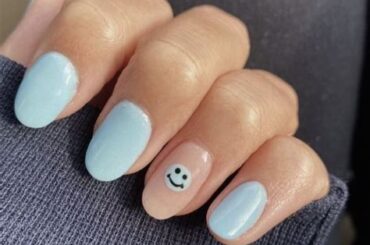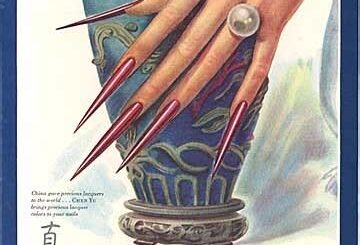Explore the historical origins, evolution, and psychological impact of nail art on self-expression, identity, and cultural influences. Dive into the subconscious messages and emotional associations.
Historical Origins of Nail Art
Nail art has a long and fascinating history, dating back thousands of years to ancient civilizations such as Egypt and China. In ancient Egypt, nail adornment was a sign of social status, with higher-ranking individuals using various colors to signify their wealth and power. Meanwhile, in China, nail art was also a symbol of social hierarchy, with the ruling class using gold and silver to decorate their nails. These early examples show that nail art has always been deeply intertwined with culture and society.
As we move forward in history, we see that nail art continued to evolve, taking on different meanings in different cultures. In India, intricate henna designs were used to adorn the nails as part of wedding ceremonies, symbolizing joy and celebration. In Japan, nail art took on a more delicate and subtle form, with the use of natural materials such as pearls and shells to create elegant designs. The historical origins of nail art illustrate how it has always been a form of self-expression and cultural significance.
One of the most influential periods in the history of nail art was the Renaissance, where elaborate nail designs became a symbol of wealth and creativity. Aristocratic women used intricate nail art to showcase their status and refinement, often incorporating precious stones and intricate patterns into their designs. The historical origins of nail art demonstrate its enduring significance as a form of personal expression and cultural symbolism.
Evolution of Nail Art Trends
Nail art has undergone a significant evolution over the years, with trends shifting and changing to reflect the current cultural and social landscape. In the past, nail art was primarily associated with special occasions or events, and designs were often limited to simple patterns or single-color applications. However, as society has become more open to self-expression and creativity, nail art has evolved to encompass a wide range of styles and designs.
With the rise of social media and the influence of celebrity culture, nail art trends have become more diverse and accessible. People are now able to experiment with different designs, colors, and techniques, leading to a greater variety of nail art styles. From intricate patterns to bold and vibrant colors, nail art has become a popular form of self-expression and creativity.
Furthermore, nail art trends have also been influenced by advancements in technology and beauty products. The introduction of gel polishes, acrylics, and nail wraps has allowed for more intricate and long-lasting designs, revolutionizing the nail art industry. As a result, individuals are now able to express themselves through their nails in ways that were not previously possible.
Impact of Nail Art on Self-expression
When it comes to expressing oneself, people often turn to various forms of art, and nail art is no exception. The way we choose to design and adorn our nails can serve as a means of self-expression, allowing us to showcase our individuality and creativity. Whether it be bold and vibrant colors, intricate patterns, or unique designs, our nail art can speak volumes about our personality and style.
Nail art has the ability to reflect our moods, interests, and even our beliefs. For example, someone who is feeling cheerful and optimistic may opt for bright, cheerful colors and playful designs, while someone who is feeling more subdued or introspective may choose muted tones or minimalist nail art. In this way, nail art allows us to visually communicate our emotions and thoughts without saying a word.
Furthermore, nail art can also serve as a form of rebellion or nonconformity, particularly in traditional settings where self-expression may be limited. Choosing to express oneself through unique and unconventional nail designs can be a powerful statement of individuality and independence, allowing individuals to carve out their own identity and defy societal norms.
Psychological Symbolism of Nail Colors
The Psychology of Nail Art: What Your Nails Say About You
When it comes to nail art, the colors you choose can say a lot about your personality and emotions. The psychological symbolism of nail colors has been studied and analyzed to understand the deeper meanings behind our choices. Each color has its own unique symbolism, and understanding the psychology behind these choices can provide insight into the subconscious messages we are sending through our nail art.
For example, the color red is often associated with passion, confidence, and power. People who choose red nail polish may be feeling bold and assertive, or they may want to project a sense of strength and passion. On the other hand, soft pastel shades such as pink or lavender are often linked to feelings of femininity, gentleness, and compassion. Those who opt for these colors may be seeking a sense of calm and tranquility, or they may want to express their sensitive and nurturing side.
It’s important to note that the psychological symbolism of nail colors can be influenced by individual experiences and cultural associations. In some cultures, certain colors may have different meanings than they do in others. Additionally, personal preferences and experiences can also impact the way we interpret and express ourselves through nail art. By understanding the psychological symbolism of nail colors, we can gain a deeper appreciation for the ways in which our nail art choices reflect our inner thoughts and emotions.
The Subconscious Messages in Nail Designs
The Subconscious Messages in Nail Designs
Nail art is more than just a fashionable trend; it can also be a window into the subconscious mind. The designs and colors we choose for our nails can reveal a lot about our personality, emotions, and even our innermost desires. From the shapes and patterns to the choice of colors, every aspect of nail art carries a message that goes beyond mere aesthetics.
For example, bold and vibrant colors such as red and black often signify confidence and power, while pastel shades like pink and light blue may reflect a more delicate and romantic personality. Geometric designs can suggest a strong and structured mindset, while free-flowing and abstract patterns may indicate a more carefree and artistic nature.
Moreover, the subconscious messages in nail designs can also change over time, reflecting shifts in our emotions and mindset. For instance, a sudden preference for dark and moody nail colors may hint at a period of melancholy or introspection, while a switch to bright and cheerful patterns could signify a newfound sense of optimism and joy.
Gender and Cultural Influences on Nail Art
In many cultures around the world, nail art has long been associated with femininity and beauty. However, the trends and styles of nail art can vary greatly depending on the gender and cultural influences. Gender plays a significant role in the type of nail art that individuals may choose to engage in. For example, in some societies, elaborate and colorful nail designs are seen as more acceptable for women, while men may be expected to have a more conservative and understated appearance. These cultural expectations can greatly impact the way people express themselves through their nail art choices.
Furthermore, certain cultures have specific traditions and customs related to nail art. For instance, in some Asian cultures, intricate nail designs using natural elements like flowers and leaves are highly regarded. In contrast, in Western cultures, bold and experimental designs are often favored. It is important to recognize how cultural influences can shape the perceptions and practices of nail art in different parts of the world.
As society continues to evolve, there is a greater push for gender-neutral and inclusive perspectives on beauty and self-expression. This shift has led to a rise in diverse and boundary-breaking nail art styles that challenge traditional gender norms and cultural expectations. Ultimately, nail art serves as a powerful tool for self-expression and individuality, regardless of gender or cultural background.
Emotional Associations with Nail Art Choices
When it comes to nail art, the choices we make are often influenced by our emotions. Whether we realize it or not, the colors, designs, and styles we select can be a reflection of our current emotional state. For example, bright and vibrant colors such as red and pink may be chosen when feeling happy and confident, while darker shades like black or deep blue may be chosen when feeling more somber or introspective.
Additionally, the designs we choose for our nails can also be a reflection of our emotions. For instance, choosing delicate floral patterns may signify a sense of femininity and connection to nature, while bold geometric designs may represent a desire for structure and order. Nail art choices can also be influenced by the need for comfort and security, with simple and understated designs being preferred during times of stress or uncertainty.
Furthermore, the act of getting our nails done can also have emotional significance. For some, it may be a form of self-care and pampering, serving as a way to boost confidence and lift spirits. For others, it may be a way to express creativity and individuality, providing a sense of empowerment and self-expression. Whatever the emotional associations may be, nail art choices can serve as a powerful form of nonverbal communication, allowing us to express and connect with our emotions in a unique and personal way.
Self-esteem and Confidence in Nail Art
Nail art has become a popular form of self-expression and creativity, allowing individuals to showcase their personality and style through intricate designs and vibrant colors. For many, the process of getting their nails done is not just a cosmetic ritual, but a way to boost their self-esteem and confidence. The act of getting a manicure or pedicure can serve as a form of self-care, a moment of relaxation and pampering that can help individuals feel more confident and put-together.
Research has shown that engaging in activities that make us feel good about ourselves, such as nail art, can have a positive impact on our self-esteem. By taking the time to focus on our appearance and adorn ourselves with beautiful nail designs, we are sending a message to ourselves and others that we value self-care and take pride in our appearance. This act of self-expression is empowering and can help individuals feel more confident in their own skin.
Furthermore, the act of receiving compliments on one’s nail art can also boost confidence and self-esteem. When others take notice of your carefully curated nail designs, it can serve as validation and affirmation of your personal style and creativity. This positive feedback can help individuals feel more confident in their choices and encourage them to continue expressing themselves through nail art.
Nail Art as a Form of Personal Identity
In today’s world, nail art has become a popular form of self-expression, allowing individuals to showcase their personality and individuality through unique nail designs. Whether it’s a simple, classic manicure or an intricate, eye-catching nail art creation, the choices we make for our nails can reveal a lot about who we are as individuals.
For many people, nail art is a way to express their personal identity and display their creativity. The colors, patterns, and designs chosen for nail art can often reflect an individual’s interests, passions, and overall style. Whether it’s bold, bright colors that showcase a vibrant personality or minimalist, understated designs that convey a more subtle nature, our nail art choices can serve as a reflection of our personal identity.
Furthermore, nail art can also play a role in boosting self-esteem and confidence. When individuals take the time to create or choose nail art that resonates with them, it can serve as a form of self-care and a way to feel good about oneself. In this way, nail art can be a powerful tool for individuals to connect with their personal identity and express themselves through unique, creative designs.
Frequently Asked Questions
How does nail art reflect a person’s personality?
Nail art can reflect a person’s creativity, attention to detail, and self-expression. Bold designs may indicate confidence, while intricate designs may show patience and precision.
Can nail colors convey different meanings?
Yes, nail colors can convey different meanings. For example, red can signify passion and power, while pastel colors may indicate a more soft and feminine personality.
What do long nails say about a person?
Long nails may suggest that a person values elegance and takes time for self-care. However, it can also indicate that they are less likely to engage in physical activities.
Is there a cultural significance to nail art?
Yes, nail art can hold cultural significance. For example, in some cultures, specific colors or designs may be associated with traditions, celebrations, or social status.
How does nail art impact one’s self-confidence?
Wearing nail art that one feels proud of can boost self-confidence and serve as a form of self-expression. It has the potential to uplift mood and make a person feel put together.
What can nail technicians learn from analyzing nail art choices?
Nail technicians can learn about their clients’ personalities, preferences, and even potential mood or behavior clues from analyzing their nail art choices. Understanding these can help in providing a more personalized service.
Can nail art be used as a form of therapy?
Yes, some individuals may find the process of getting nail art or doing it themselves therapeutic. The act of self-pampering and the visual representation of their personality can be mentally uplifting.





